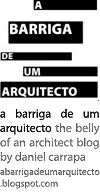A note to English language readers
Published Thursday, September 25, 2008.
As of today [a barriga de um arquitecto] will be supporting a mirror-blog in English language, available at eng-abarrigadeumarquitecto.blogspot.com.
I started publishing bilingual Portuguese-English posts as a natural progression of my experience in the blogosphere. Most of the blogs that I follow are written in foreign language – English and Spanish, with the occasional exception of titles such as Arkitektur, in Swedish but, hélas, I only look at the pictures.
So If you enjoy visiting my blog, I hope you find this solution more appealing. There is a separate rss content feed available for English posts only. Drop me a note to abarrigadeumarquitecto [at] gmail [dot] com or leave a message if you find any problems.
Thank you for your visiting!
I started publishing bilingual Portuguese-English posts as a natural progression of my experience in the blogosphere. Most of the blogs that I follow are written in foreign language – English and Spanish, with the occasional exception of titles such as Arkitektur, in Swedish but, hélas, I only look at the pictures.
So If you enjoy visiting my blog, I hope you find this solution more appealing. There is a separate rss content feed available for English posts only. Drop me a note to abarrigadeumarquitecto [at] gmail [dot] com or leave a message if you find any problems.
Thank you for your visiting!
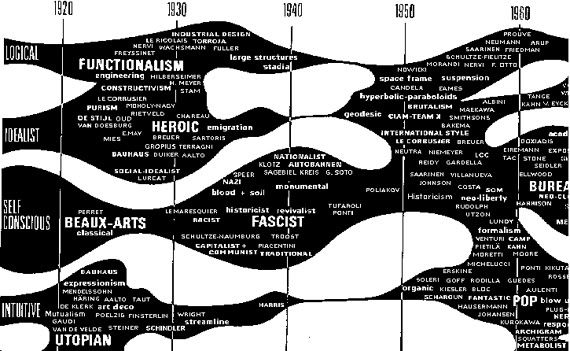
Image from “Modern Movements in Architecture” by Charles Jencks (1973, Penguin).
Lebbeus Woods has recently published an interesting theoretical exercise about ”dead words”: words and terms that have lost their significance in the architectural world.
His small essay is particularly revealing of unconcealed mutations that have taken place in architecture history. Many of his fading words are, in one way or another, related to twentieth century modern culture and theory. Their loss of meaning is enlightening as to a wider process of deconstruction of political ideologies that sustained modern theory. A process under which we may identify the true implications of post-modernism: the rise of the marketplace, the prevalence of the economic discourse over political ideas and beliefs. Words like RADICAL and PROGRESS refer directly to such concepts that have lost meaning in the transition to post-modernity, latu sensu. The abandonment of other words – NEW, ORIGINAL, EXPERIMENTAL – exposes a reality tainted by the fall of idealism. Cynicism has prevailed. The elites have fallen – GENIUS – and are now looked upon, as LW says, with derogatory terms: “celebrity”, “starchitect”.
Maybe one could extrapolate as to a wider dimension of this vast process, as an evidence of the death of certain ideas. And so I would add two words to the list: STYLE and MOVEMENT. The idea of STYLE as a specific discourse enclosed great meaning in architecture theory, as an expression of certain artistic and ideological principles. This concept has lost its meaning altogether in contemporary architectural practice. Architects no longer assume themselves as the bearers of such doctrines. The idea of the architect as an advocate for STYLE seems ludicrous in a world dominated by shattered complexity. Pattern recognition has replaced the linear thinking of the modern world, and architecture practice now focuses on process and programmatic analysis, giving birth to new concepts: creative diagramming, for example.
Also, the idea of MOVEMENT as an ideologically charged expression has become distant. The accelerated information landscape of the digital world has changed our perspective of history as a linear sequence of cultural movements. Complexity and uncertainty are the dominant values of our times. And so, as the world changes into the unknown, so change our architectural manifestations, and so does our language.
0300TV is playing a special series of documentaries titled «China According to China». An inside view at the accelerated industrial and urban transformations that are taking place under one of the world’s fastest growing economies. Contemporary China is a nation that faces a complex global situation as the strong western affluence bears noticeable implications with its ability to safeguard its cultural heritages. A struggle that extends into the fields of architecture and urbanism, as an unparalleled process of destruction and construction gives birth to a new reality of unforeseen social repercussions.
PART ONE: Schools killing creativity? – Riz Kahn speaks with world renowned creativity and education expert Ken Robinson.
If you’ve got half a brain, chances are you already love Ken Robinson. I know I do. His presentation on TED is an outstanding starting point for reflection on the need for an educational system that promotes creativity and experimental innovation.
Former CNN news anchor Riz Kahn recently interviewed Robinson for Al Jazeera English, providing him a good chance to develop his ideas on the current state of education.
Robinson expresses his worries towards the educational system as it’s still based on an old idea of intelligence and an outdated concept of economic need and purpose. He dramatizes the reasons why school institutions have become strong contributors to the systematic suppression of individual talent. The overwhelming logics of standardization have given focus to the issues of curriculum and evaluation, putting the very process of teaching into a secondary level of importance.
There’s a good amount of misunderstanding towards his ideas on creativity, as something that refers specifically to the realm of Arts. Robinson emphasises the importance of creativity in all areas of human intelligence – creativity as a manifestation of intellectual complexity, an ability to make connections between learned references and individual experiences. Something that’s in fact not so much a talent but a learned ability to solve problems. Creativity should not be perceived as a mysterious art to be practiced only by the most gifted minds, but a thinking tool that allows for the connection of ideas through an open process of reasoning.
PART TWO: Schools killing creativity? – Riz Kahn interviews Ken Robinson for Al Jazeera English.
Ken Robinson concludes on the need to raise standards and introduce a whole new approach towards the assessment of creativity, stating that school systems don’t need to be reformed, they need to be transformed. Our collective failure to promote creative capacities is a tragedy for the future of our economies; something that we should all realize we just can’t afford.
Via Core77, Designverb.
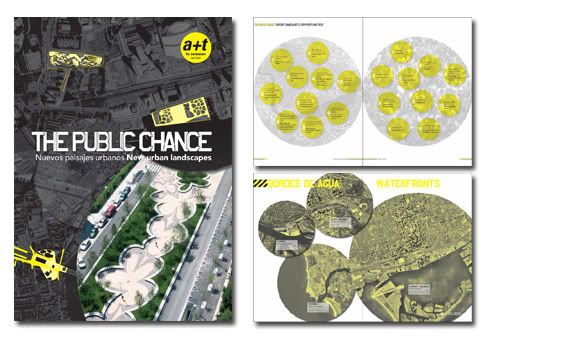
The Public Chance: New Urban Landscapes is a new book from a+t architecture publishers.
Public space plays a determinant role in the urban environment, standing as an affirmation of democracy in the balance between the public and private dimensions of the city. Its importance in the context of contemporary societies goes beyond a statement of symbolic identity, providing a territory for collective manifestations of life, either as a playground for individual expression or an open stage for the community. In the new context of a global economy, unforeseen challenges are being inflicted upon the state’s capacity as a promoter of the public domain. New actors come into play as private interests assume a decisive role in the urban sphere.
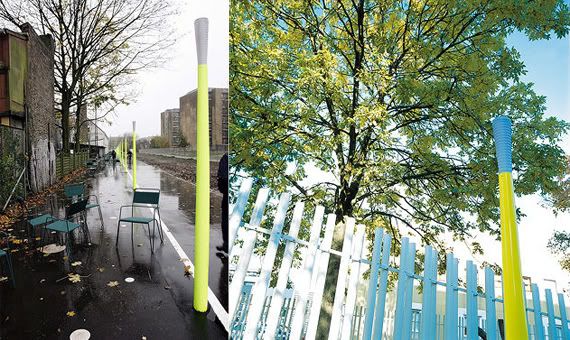
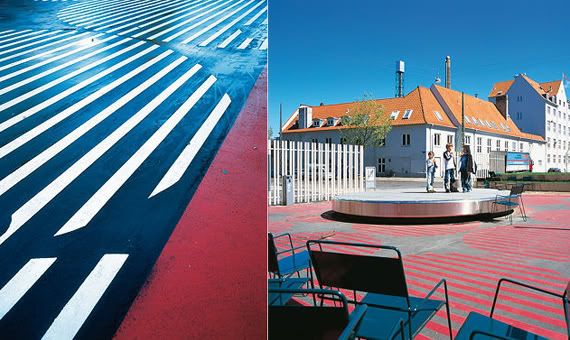
Kristine Jensens Tegnestue: Prags Boulevard, Copenhagen, Denmark, 2005.
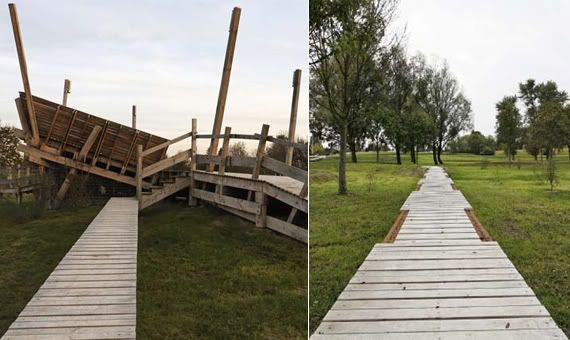
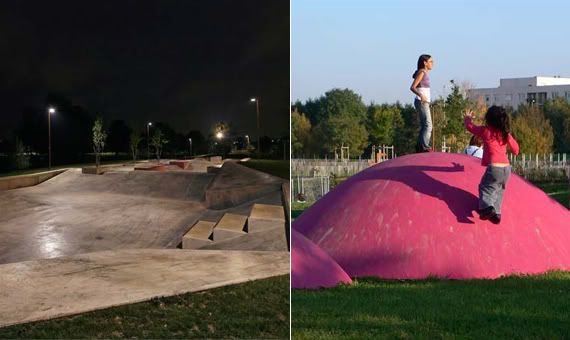
Base Paysagistes: Prés de Lyon Park, Troyes, France, 2006.
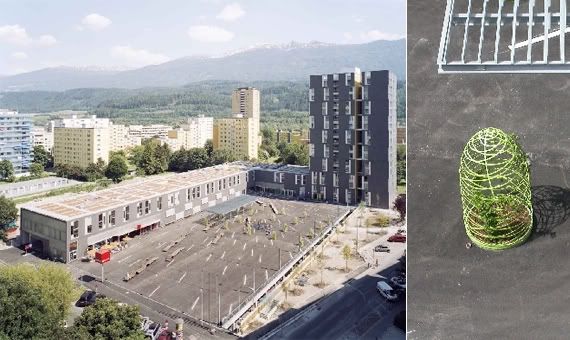
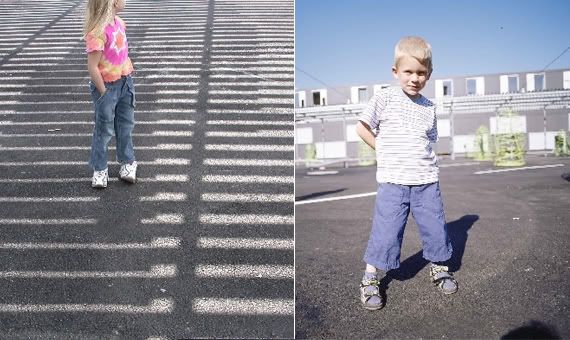
Froetscher Lichtenwagner + Idealice: O-Dorf Square, Innsbruck, Austria, 2006.
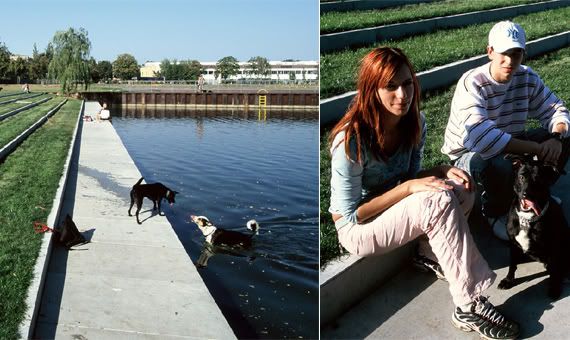
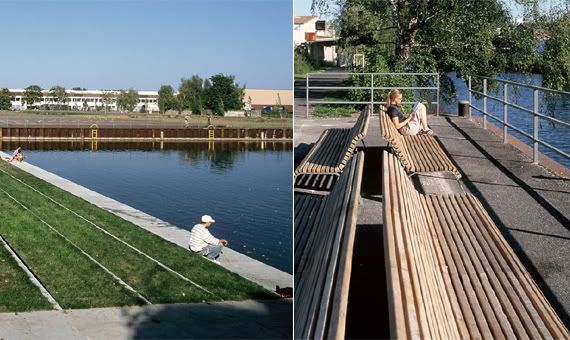
Topotek 1: Maselake Waterfront / Industrial Site, Berlin-Spandau, Germany, 2006, 2002.
The Public Chance, a recently launched book from a+t architecture publishers, provides a reflection on the complex tensions that intermediate the public and private initiative in the territory of contemporary cities. A selection of distinctive urban interventions is presented and dissected through a visual and diagrammatical analysis. Featured projects are selected among specific typologies to portray a wide array of strategies on public space design, offering a view on urban landscapes as opportunity generators ranging from a territorial to an individual scale.
Visit a+t for additional information on this book and other publications.
João Lopes is a renowned Portuguese film critic. He also writes regularly on the blog Sound + Vision (only available in Portuguese). Lately, he’s been developing some of his ideas on the issue of blogging violence. More precisely, on how the blogging arena seems to emulate an appearance of pluralism and intellectual debate that, looked upon closely, often reveals a profound absence of rationalist and critical thinking.
João Lopes refers to it as a virtual plague: the unremitting depiction of opposite points of view through ironic misrepresentation. In his own words, blogging is contributing to a misguided sense of democratization, frequently conducive to a “devastating triumph of ignorance”.
His ideas seem to resonate with Pacheco Pereira’s reflections on the specificity of Portuguese blogging culture. This trend, as both authors agree, is not exclusive to the realm of blogs. It is in fact part of a wider tendency: the rise of demagogic speech over rationalist discourse –the very foundation of democratic thinking. On our way to Idiocracy, maybe?
As far as blogging goes, that may just be the case. The truth is that most bloggers have no clue as to the origins of blogging, not only as a phenomenon but as a culture in itself as well – something that first generation bloggers were already debating back in 2002. A passage from Rebecca Blood’s popular book comes to mind: that there’s a big difference between saying “The facts don’t corroborate that interpretation of this event” and saying “this is stupid” – or even worse: “I had no idea you where this stupid”.
Second generation bloggers should probably come aware that there is such a thing as weblog ethics and become advocates for it. But should we really expect blogging to become a beacon of ethics when the world around it - from politics to journalism - seems to be wounded by the same kind of intellectual corrosion? Afflicted by the same logics of over-simplification, parodic distortion and blatant aggressiveness on the face of contradictory points of view?
The blogosphere is a place where these forms of behavior may appear more evident as it lacks the social codes of conduct required by direct human contact that make sense in the “outside world”. But the ills that João Lopes correctly identifies within the blogosphere are widespread and extensive to most forms of cultural expression today. That dialogue, sustained on collaborative thinking, is a seemingly dead art.
Many second generation bloggers are seduced by the idea that blogs are an open window to the world. That blogs are a stand where your ideas will be heard. And so, opinion-based blogging is all about the exposition of opinion, and not about interchanging arguments on a rational, civilized basis. Most of these bloggers, I’m afraid, although seduced by the allure of blogs, are not in love with blogging as a practice – either for filtering references, reflect on particular subjects or even for personal expression. And, most of all, they reveal no interest in understanding the significance of blogs as the cartographers of the online world and its importance in the context of a knowledge based economy. The declining importance of the “quote” and even the “link” as an institution is a relevant symptom of this undergoing process. Blogging is becoming an exercise on opacity.
João Lopes refers to it as a virtual plague: the unremitting depiction of opposite points of view through ironic misrepresentation. In his own words, blogging is contributing to a misguided sense of democratization, frequently conducive to a “devastating triumph of ignorance”.
His ideas seem to resonate with Pacheco Pereira’s reflections on the specificity of Portuguese blogging culture. This trend, as both authors agree, is not exclusive to the realm of blogs. It is in fact part of a wider tendency: the rise of demagogic speech over rationalist discourse –the very foundation of democratic thinking. On our way to Idiocracy, maybe?
As far as blogging goes, that may just be the case. The truth is that most bloggers have no clue as to the origins of blogging, not only as a phenomenon but as a culture in itself as well – something that first generation bloggers were already debating back in 2002. A passage from Rebecca Blood’s popular book comes to mind: that there’s a big difference between saying “The facts don’t corroborate that interpretation of this event” and saying “this is stupid” – or even worse: “I had no idea you where this stupid”.
Second generation bloggers should probably come aware that there is such a thing as weblog ethics and become advocates for it. But should we really expect blogging to become a beacon of ethics when the world around it - from politics to journalism - seems to be wounded by the same kind of intellectual corrosion? Afflicted by the same logics of over-simplification, parodic distortion and blatant aggressiveness on the face of contradictory points of view?
The blogosphere is a place where these forms of behavior may appear more evident as it lacks the social codes of conduct required by direct human contact that make sense in the “outside world”. But the ills that João Lopes correctly identifies within the blogosphere are widespread and extensive to most forms of cultural expression today. That dialogue, sustained on collaborative thinking, is a seemingly dead art.
Many second generation bloggers are seduced by the idea that blogs are an open window to the world. That blogs are a stand where your ideas will be heard. And so, opinion-based blogging is all about the exposition of opinion, and not about interchanging arguments on a rational, civilized basis. Most of these bloggers, I’m afraid, although seduced by the allure of blogs, are not in love with blogging as a practice – either for filtering references, reflect on particular subjects or even for personal expression. And, most of all, they reveal no interest in understanding the significance of blogs as the cartographers of the online world and its importance in the context of a knowledge based economy. The declining importance of the “quote” and even the “link” as an institution is a relevant symptom of this undergoing process. Blogging is becoming an exercise on opacity.

One of the most significant distinctions one can make in architecture today is probably not regarding dimension but economy. More precisely regarding cost-effectiveness concerns – or how architects approach the issue of adequacy between the means and the ends of architectural design.
I find this matter extremely relevant not only because we’re not all designing for Dubai but as this sense of adequacy is at the core of what should be a sustainable practice. The ethics of sustainability rely precisely on fighting superfluous “obesities”. Design – even more so in architectural design – is all about adequacy, about effectiveness, about finding the essential relationship between the present conditions and that which needs to be introduced as new. This should not be seen as an obstacle to innovation; in fact it’s very much the opposite. In a world without budget restrictions anyone can exert sensational icons, works of art that are not necessarily innovative works of architecture. The opposite, however, is possible. To do more with less. To overcome a constricted budget through exceptional design and generate objects of true singularity.
These thoughts come to mind as I reflect on the beautiful Dønning Community Building, a civic facility designed by Einar Jarmund and Hâkon Vigsnæs.
This team of Norway-based architects has been receiving growing attention lately, mostly for their outstanding housing projects. But this one I find particularly moving as it almost resonates with Kuma’s theory of “weak buildings”. The Dønning facility is probably one of their less sophisticated projects, a distinctive creation of raw materiality. This youth club proposed for a local community organization is a brilliant example of how architecture can rise above enveloping limitations. Structural design is simple and cost effective: almost a warehouse of slightly convoluted forms. The openings are few but prominent, providing both an energy efficient solution and a deliberate use of natural light. The external skin is made of corrugated fiber cement boards; another low budget option to which the use of contrasting colors – natural grey and red – provide dramatic visual effect.
In its simplicity and tension of form, the Dønning Community Building stands as a singular statement, a bare gesture of unadorned humanity in the midst of a wide, sensational landscape.

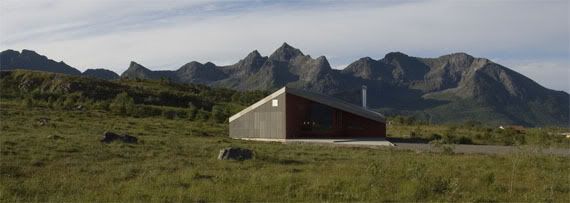
Note: the Dønning Community Building was recently published on Arch Daily where you can find many images and, better yet, a full set of technical drawings. It is also featured on a+t Civilities II magazine.
Architecture: Jarmund/Vigsnæs AS Architects MNAL.
Photography: Jarmund/Vigsnæs AS, John Stenersen.
External references: a+t Civilities II, Arch Daily.
The trouble with blogs is a matter of density. Blogs are a specific communication platform. They retain a uniqueness in language that relates to interface structure. Not as dense as a magazine but likely not as light as a tv-spot, the greatest asset of blogs is that they’re ongoing. Blogs make enduring dialogue possible and because they are specific in nature they may acquire a depth that otherwise wouldn’t seize in the short term.
The evolution of web standards had a definite impact on blogging interface. As we all know, blogs are much more graphic now than they were a few years ago. The visual features have gained power over the textual dimension.
As far as architectural blogs go, this trend has contradictory consequences. Interestingly enough, the most acclaimed blogs are still the ones with the best written text. But as far as editing goes – as far as what gets the spotlight and what doesn’t – the visual element has become growingly decisive.
Not surprisingly, what goes on under thriving economies gets wide visibility even though the substance of its architecture may not always match the prominence of its looks. Hence the rotating towers, the high-rise achievements and countless architectastic buildings that look like something: from boats to flowers to stuff coming straight from star wars. It doesn’t matter how architecturally irrelevant the tallest building in the world is. It’s still “the tallest building in the world”. A rotating tower may be an intellectually frivolous concept but hey, it rotates. If you haven’t seen it before, it’s news. And the previously unseen makes for great blogging material.
So there’s this downside to blogging when you think of it as a learning tool, because what gets noticed isn’t necessarily the most relevant but that which is most visually remarkable – which is often not the same thing. A good example of this can be found on the issue of “sustainable architecture”; or how blogging is a contributor to the establishment of an aesthetic understanding of eco-design. Architecture going literally green - grass on the roofs, trees and bushes hanging from the walls – as if this was necessarily the expression of sustainable ideals in the realm or architectural design.
One of the contributing reasons for this outcome is a sense of conceptual interpretation – the need to visually translate ideas. A mechanism to which blogs are particularly subsidiary to. For it is much more complicated to delve into the specificities of the design process – either relating to environmental impacts of applied materials, matters of cost-benefit or the gains of specific design solutions – than to produce a visual grammar for green-building.
In a wider scope one could say that blogging – despite its positive aspects, and there are many – is contributing to the global culture of simplification. Too much synthesis, not enough analysis. Which is somewhat disappointing, as this is a medium where discourse doesn’t seem to have a beginning or an end – and long-term examination should, therefore, be the paradigm of intellectual contribution. In the end, it doesn’t really matter that the tower rotates. What matter is why we are driven for that single idea; what compels us in the name of something, either it be the new or the old, the decadent or the sustainable. And if so, maybe blogs, these open forms of dialogue, can assist our understanding and bring us closer to some kind of awareness.
The evolution of web standards had a definite impact on blogging interface. As we all know, blogs are much more graphic now than they were a few years ago. The visual features have gained power over the textual dimension.
As far as architectural blogs go, this trend has contradictory consequences. Interestingly enough, the most acclaimed blogs are still the ones with the best written text. But as far as editing goes – as far as what gets the spotlight and what doesn’t – the visual element has become growingly decisive.
Not surprisingly, what goes on under thriving economies gets wide visibility even though the substance of its architecture may not always match the prominence of its looks. Hence the rotating towers, the high-rise achievements and countless architectastic buildings that look like something: from boats to flowers to stuff coming straight from star wars. It doesn’t matter how architecturally irrelevant the tallest building in the world is. It’s still “the tallest building in the world”. A rotating tower may be an intellectually frivolous concept but hey, it rotates. If you haven’t seen it before, it’s news. And the previously unseen makes for great blogging material.
So there’s this downside to blogging when you think of it as a learning tool, because what gets noticed isn’t necessarily the most relevant but that which is most visually remarkable – which is often not the same thing. A good example of this can be found on the issue of “sustainable architecture”; or how blogging is a contributor to the establishment of an aesthetic understanding of eco-design. Architecture going literally green - grass on the roofs, trees and bushes hanging from the walls – as if this was necessarily the expression of sustainable ideals in the realm or architectural design.
One of the contributing reasons for this outcome is a sense of conceptual interpretation – the need to visually translate ideas. A mechanism to which blogs are particularly subsidiary to. For it is much more complicated to delve into the specificities of the design process – either relating to environmental impacts of applied materials, matters of cost-benefit or the gains of specific design solutions – than to produce a visual grammar for green-building.
In a wider scope one could say that blogging – despite its positive aspects, and there are many – is contributing to the global culture of simplification. Too much synthesis, not enough analysis. Which is somewhat disappointing, as this is a medium where discourse doesn’t seem to have a beginning or an end – and long-term examination should, therefore, be the paradigm of intellectual contribution. In the end, it doesn’t really matter that the tower rotates. What matter is why we are driven for that single idea; what compels us in the name of something, either it be the new or the old, the decadent or the sustainable. And if so, maybe blogs, these open forms of dialogue, can assist our understanding and bring us closer to some kind of awareness.
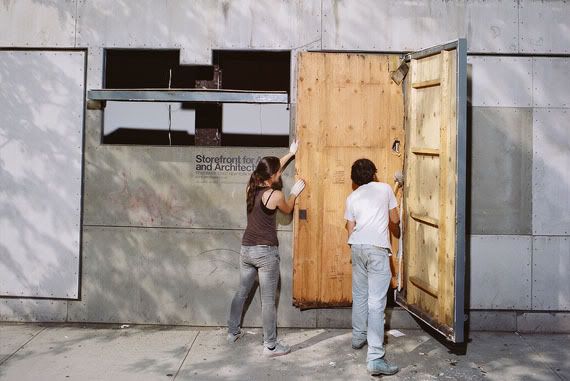
The Storefront for Art and Architecture - home of Postopolis, the architectural blogging command center of the world - is being renovated.
Its peculiar façade is well known for the wide multi-shaped panels that pivot to open directly into the street. It was designed by Vito Acconci and Steven Holl in 1993 and was intended to last 2 years. It became such an iconic trademark of the institution, however, that it remained untouched until now.
The renovation will maintain the original design and can be followed almost daily through the blog Restorefront.
ENGLISH EDITION
The English-only edition of the blog A Barriga de um Arquitecto is no longer being updated. Please visit the main page to access new content, additional information and links.
ARCHIVES | ARQUIVO
September 2008 October 2008 November 2008 December 2008 January 2009 February 2009 March 2009 April 2009 May 2009 June 2009 July 2009 August 2009 September 2009 October 2009 November 2009 December 2009 January 2010 February 2010 March 2010 April 2010 May 2010 June 2010 July 2010 August 2010 November 2010 January 2011 February 2011 March 2011 June 2011 July 2011 October 2011 December 2011
